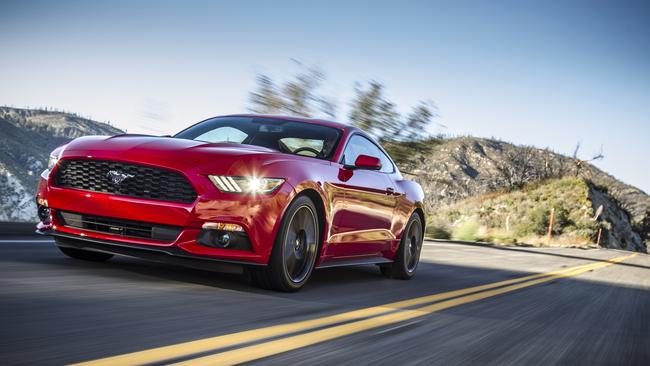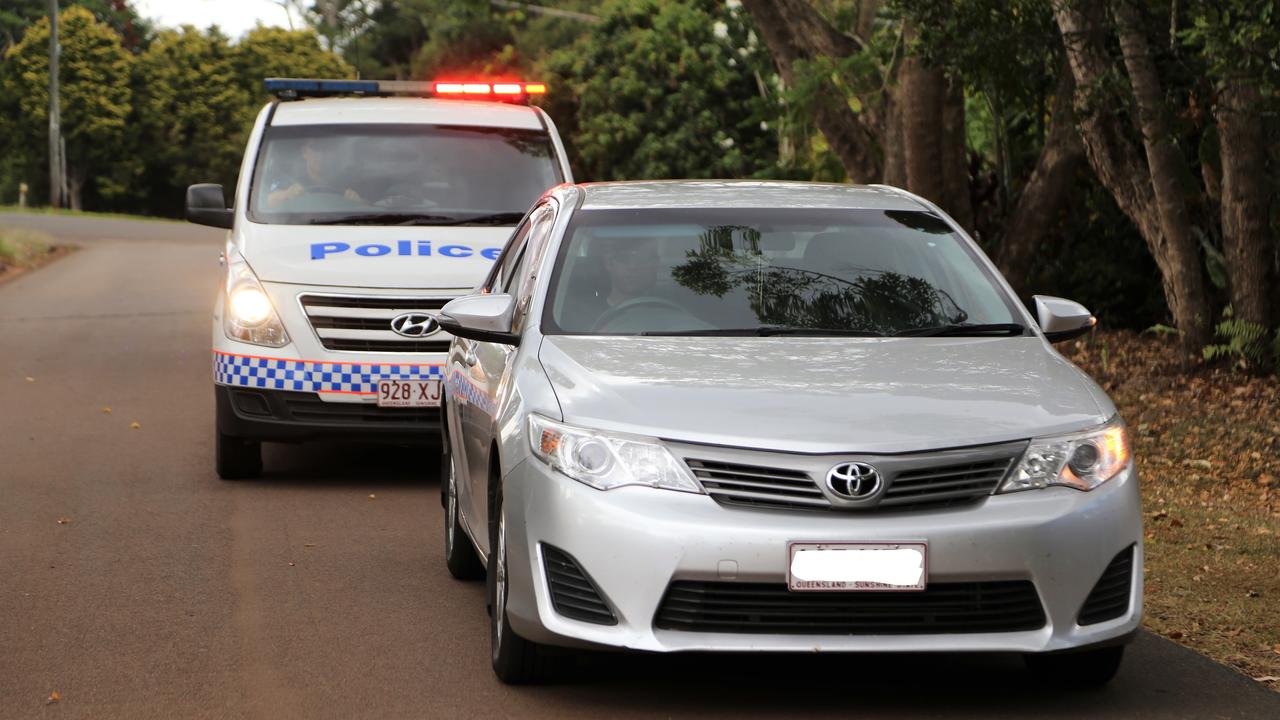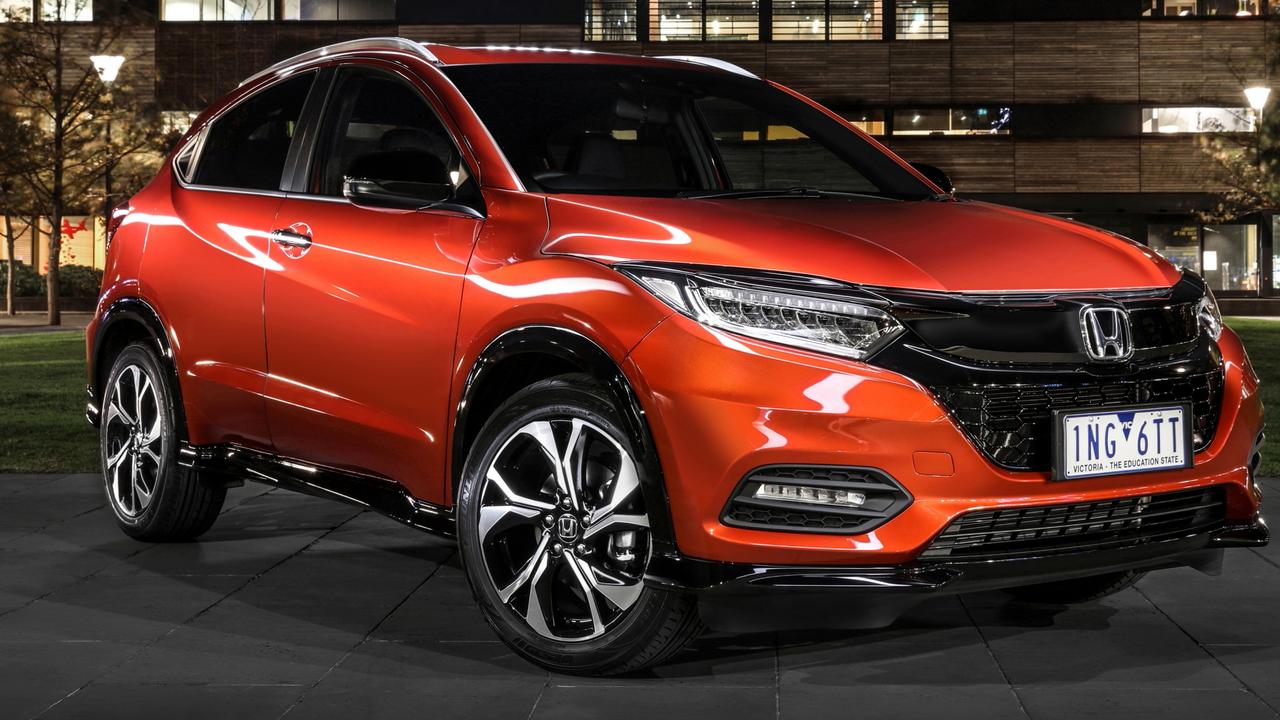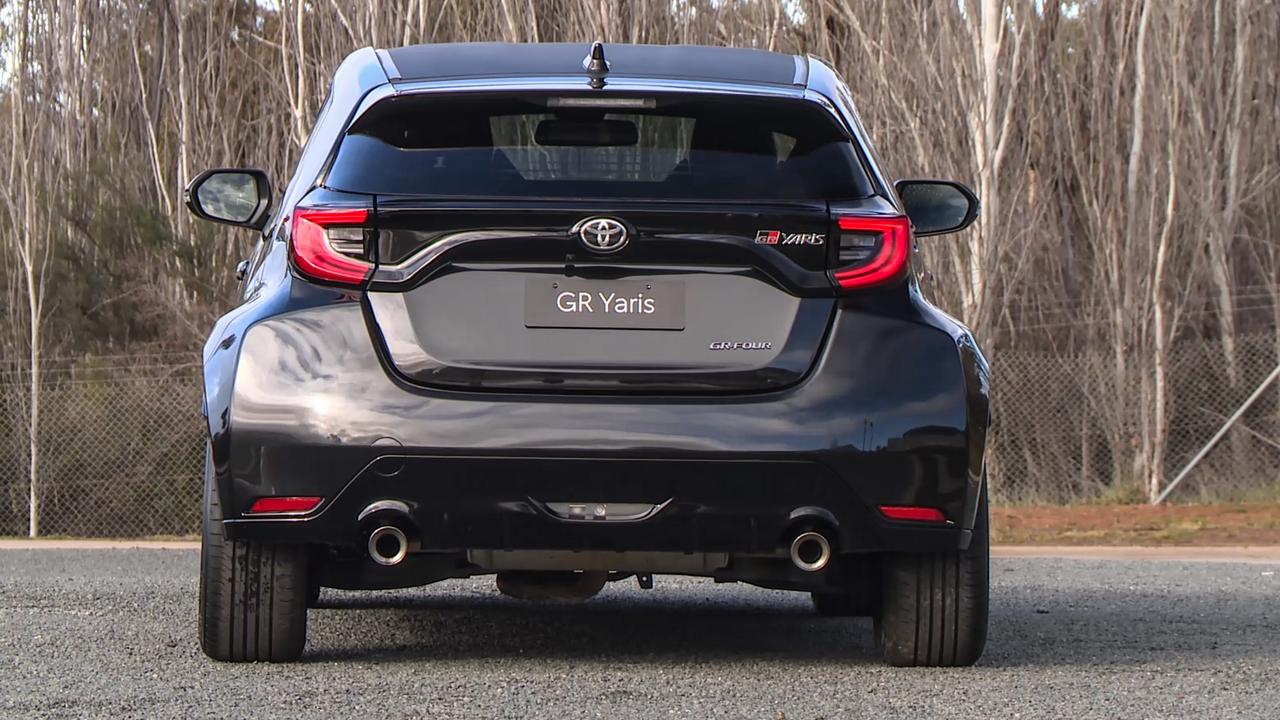Test drive: Ford’s new four-cylinder Mustang
THE Ford Mustang has long been renowned for its sheer grunt, but will its new four-cylinder version still let you be king of the road? We take it for a spin.

PUSH the ‘start’ button on the new Ford Mustang and you expect the rumble of a V8.
But what I have here is an eerie silence. I’ve grabbed the keys to a four-cylinder Mustang. And I can barely hear it.
That’s right. A four-cylinder Mustang.
RELATED: How we broke the story on the Mustang’s return
MORE: Police could become Mad Max cops with new Mustang
Ford has added a four-cylinder to the Mustang range to broaden the car’s customer appeal and to meet strict fuel economy targets in Europe.
Australia will get both the four-cylinder and the V8 when it arrives in showrooms in the second half of 2015, but I’ve grabbed the keys to the four-cylinder first because that’s the one everyone is most curious about.
Australians have had an aversion to large cars and four-cylinder engines since the asthmatic four-cylinder Commodore from the 1980s.
Holden put a Gemini engine in its family car in a kneejerk reaction to the fuel crisis in the 1970s; in the end the four-cylinder used as much fuel as the six-cylinder because it had to work so hard to move the heavier Commodore.
But times have changed and so has technology.

The four-cylinder in the latest, sixth-generation Mustang (Ford also fitted four-cylinder engines to the Mustang in the US between 1978 and 1993) has new turbocharger technology and has almost as much power as the previous V8.
BMW and other German car makers are also now getting epic performance from turbocharged four-cylinder engines.
But this is a Mustang. Can you get away with four-cylinder sacrilege in an American icon?
On first impressions, the answer is no. In stop-start Los Angeles traffic the four-cylinder sounds, well, ordinary.
It sounds like a small French van, and not at all like a Mustang should.
The side mirrors are also too small (here’s hoping Ford Australia fits convex mirrors on both sides), making it hard to pick your way through the bump and grind.
The bland standard seats are designed more for broad behinds rather than comfort and support. And you can forget the back seats; their only purpose is to somehow convince your life partner than you might, just might, be able to squeeze the kids in the back there.
The Mustang suspension is too firm and busy over even modest bumps at suburban speeds. On the bigger bumps it almost made me motion sick.
Fortunately, the traffic eventually clears and we find ourselves on the winding mountain roads behind Hollywood and into the great blue yonder.
In another twist of fate, we don’t have any traffic ahead of us, save for some aspiring Olympic cyclists on a morning hill workout.
Only then does the four-cylinder Mustang start to shine. Rev the engine above 4500rpm and the small French van sound starts to develop some character, with a subtle engine growl.
A small dose of the exhaust note from the Renault Megane RS275 or Mercedes-Benz A45 AMG would be a welcome improvement. At this point, I’d prefer to hear nothing at all than a weak attempt at an engine note.
But all is quickly forgiven after the first series of twists and turns. The four-cylinder Mustang steers beautifully.
Because the four-cylinder engine weighs less than the V8, there is less weight over the nose and better overall balance in the car front-to-rear. (For the tech heads, the weight balance is a near-perfect 52:48 for the four-cylinder and 55:45 for the nose-heavy V8).
The suspension that was too firm around town is in fact just right once you hit the open road. It’s nothing short of superb.
Power delivery across the rev range is the other surprise. The power is there and ready, whenever you need it.
Ford does not publish 0 to 100km/h times, but the four-cylinder is said to be only slightly slower than the V8. It certainly feels quick enough for most tastes. (We’ll know for sure when we test it in Australia next year.)
With less weight to bring to a stop (compared to the V8) the brakes have a sharp, responsive and reassuring feel.
The Pirelli tyres on the “Performance Pack” model tested stuck to the curves like chewing gum to a thong on a hot summer’s day.
Before I know it, I’m grinning like a kid with a new toy. And I’ve forgotten what engine is under the bonnet.
In fact, once you’re on the move there is almost no way for anyone else to pick the difference between the four-cylinder and the V8 versions of the Mustang. They both get dual exhaust pipes and the same good looks.
For the anoraks among us, though, the V8 grille has a pair of vertical ‘blades’ and a GT badge on the rear, while the four-cylinder gets the Mustang ‘pony’ badge on its rump.
Both models get the supercool three-step indicators in the tail-lights, that light up from the inside out, one vertical bar at a time.
Another piece of trivia: this car may be Ford’s most recognised model globally, but it doesn’t have a Ford badge on it anywhere. There’s a tiny Ford logo stamped in the shaded area of the windscreen.
With a car this good, Ford deserves to put a badge on it. Regardless of what engine is under the bonnet.
Verdict
The four-cylinder Mustang is a revelation. It steers with the same level of poise as a BMW coupe. In fact, I’m going to go out on a limb here and say it’s a BMW squeezed under a bulging Mustang body.
But even though the new Mustang four-cylinder is one of the surprise packets of the year, it will take great courage — and a sharp price — to get buyers to sign on the dotted line for one of these over the V8.
Early indications from dealers are that the new four-cylinder Mustang will start at about $50,000, while the V8 will be closer to $70,000.
Would I buy a four-cylinder Ford Mustang? Absolutely. It looks the business, is fun to drive, and uses a fraction of the V8’s fuel. Just don’t rev the engine while anyone else is around.
Ford Mustang: the Fast facts
Four stars
Price: $50,000 to $70,000
Engine: 5.0-litre V8 or 2.3-litre four-cylinder turbo
Power: 325kW/540Nm (V8), 230kW/430Nm (four-cylinder)
Fuel economy: 12.3L/100km (V8), 9.0L/100km (four-cylinder)
Transmission: Six-speed manual, six-speed auto
Weight: 1602kg (four-cylinder), 1691kg (V8)
Airbags: Eight (two front, two sides, driver knee, front passenger knee, rear side, curtains x 2).
On sale: In Australia in 2015
*All power and consumption figures are approximate and based on US testing standards. Australian figures may vary.



